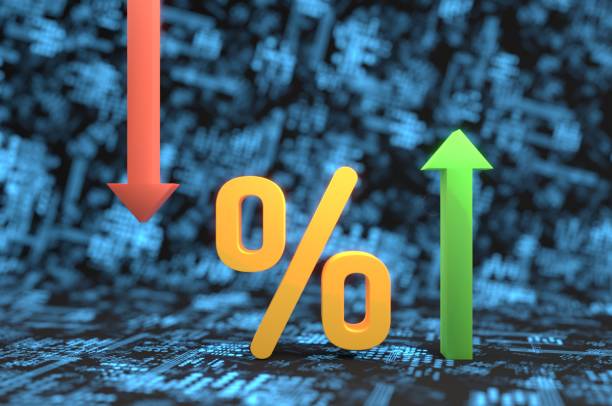In the labyrinth of mortgage options, one of the most critical decisions for prospective homebuyers is choosing between an adjustable-rate mortgage (ARM) and a fixed-rate mortgage. Each option comes with its own set of benefits and risks, which can be influenced by the ever-changing economic landscape. In this guide, we’ll explore the nuances of adjustable-rate and fixed-rate mortgages, helping you make an informed decision amidst the currents of the current economy.
Understanding Adjustable-Rate Mortgages (ARMs)
What is an Adjustable-Rate Mortgage?
An adjustable-rate mortgage, as the name suggests, features an interest rate that adjusts periodically based on market conditions. Typically, ARMs have an initial fixed-rate period, followed by regular adjustments at predetermined intervals. The initial fixed-rate period can range from one to ten years, after which the interest rate may adjust annually or semi-annually.
Benefits of Adjustable-Rate Mortgages
- Lower Initial Interest Rates: ARMs often feature lower initial interest rates compared to fixed-rate mortgages, making them an attractive option for borrowers seeking lower initial payments or planning to sell or refinance before the rate adjusts.
- Potential for Lower Payments: During the initial fixed-rate period, borrowers may enjoy lower monthly payments compared to fixed-rate mortgages, providing short-term affordability and flexibility.
- Cap Structures: Many ARMs include caps on how much the interest rate can adjust at each adjustment period and over the life of the loan, providing some protection against drastic rate increases.
Understanding Fixed-Rate Mortgages
What is a Fixed-Rate Mortgage?
A fixed-rate mortgage maintains the same interest rate for the entire term of the loan, providing stability and predictability in monthly payments. This means that your interest rate and monthly payment remain unchanged, regardless of changes in market interest rates.
Benefits of Fixed-Rate Mortgages
- Rate Stability: Fixed-rate mortgages offer stability and predictability, making it easier for borrowers to budget and plan for long-term homeownership. With a fixed-rate mortgage, you won’t have to worry about fluctuations in interest rates impacting your monthly payments.
- Protection Against Rising Rates: With interest rates at historic lows, locking in a fixed-rate mortgage can provide protection against future rate increases. This can be particularly beneficial in a rising rate environment, as it ensures that your mortgage payments remain affordable over the life of the loan.
- Peace of Mind: Fixed-rate mortgages offer peace of mind and financial security, knowing that your mortgage payments will remain consistent and manageable regardless of economic conditions or market fluctuations.
Factors to Consider in the Current Economy
Economic Outlook
Consider the current economic environment and outlook for future interest rates when choosing between an adjustable-rate and fixed-rate mortgage. In a low-interest-rate environment, such as the one we’re currently experiencing, fixed-rate mortgages may offer attractive long-term stability and protection against future rate increases.
Future Plans
Think about your future plans and how they align with the features of each mortgage option. If you plan to stay in your home for the long term and value stability and predictability in your monthly payments, a fixed-rate mortgage may be the better choice. On the other hand, if you anticipate selling or refinancing before the initial fixed-rate period ends, an adjustable-rate mortgage with a lower initial rate may be more suitable.
Risk Tolerance
Evaluate your risk tolerance and comfort level with uncertainty when considering an adjustable-rate mortgage. While ARMs can offer lower initial rates and monthly payments, they also come with the risk of future rate increases and higher payments. If you prefer certainty and want to avoid the risk of payment shock down the road, a fixed-rate mortgage may be the safer option.
Financial Goals
Consider your financial goals and how they align with each mortgage option. If your primary goal is to minimize short-term costs and maximize flexibility, an adjustable-rate mortgage may be appealing. However, if long-term stability and predictability are more important to you, a fixed-rate mortgage may better align with your financial objectives.
Conclusion: Making the Right Choice for You
Choosing between an adjustable-rate and fixed-rate mortgage is a significant decision that requires careful consideration of your financial situation, goals, and the current economic environment. While adjustable-rate mortgages offer lower initial rates and payments, they also come with the risk of future rate increases and payment shock. Fixed-rate mortgages, on the other hand, provide stability and predictability but may come with slightly higher initial rates.
In the current economy, with interest rates at historic lows, fixed-rate mortgages may offer attractive stability and protection against future rate increases. However, the right choice ultimately depends on your individual circumstances and preferences. By weighing the benefits and risks of each option and considering factors such as economic outlook, future plans, risk tolerance, and financial goals, you can make an informed decision that best suits your needs and sets you on the path to successful homeownership.



